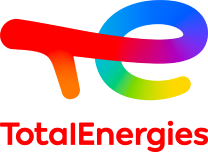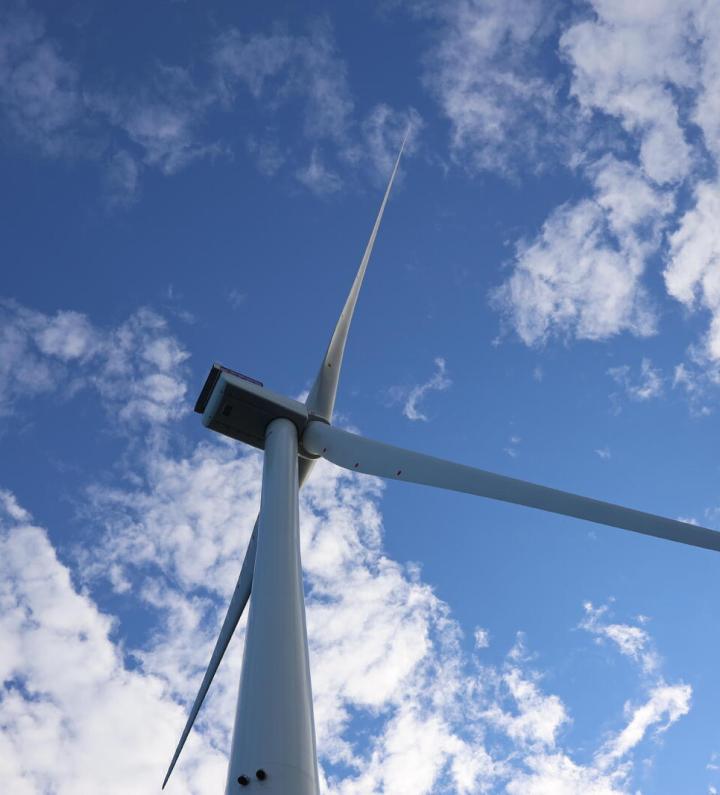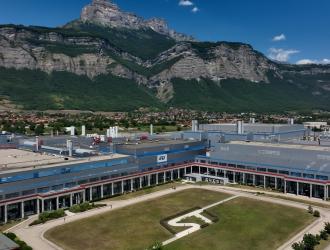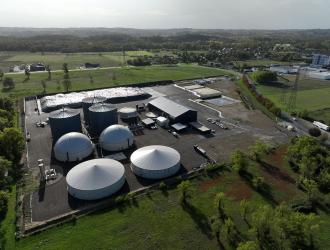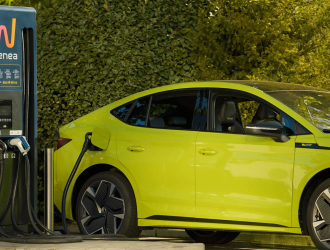Improving Our Products and Supporting Our Customers
Improving our Products and Supporting our Customers
Improving our Products and Supporting our Customers
We all have a role to play in the energy transition – public authorities, energy producers and energy consumers. In order to meet the energy needs of a growing global population while also minimizing climate change, TotalEnergies provides its customers with increasingly low-carbon products and services, thereby helping them to reduce their emissions and driving the energy transition.
The key indicator of our progress is the lifecycle carbon intensity of the energy products sold, which is the ratio between the lifecycle emissions of our energy products sold and the quantity of energy supplied.
TotalEnergies has reaffirmed the relevance of its balanced integrated multi-energy strategy, anchored on two pillars, Oil & Gas, especially LNG, and electricity, the energy at the heart of the energy transition.
By 2030, this strategy aims to result in a sales mix of energy products with the view to final use whose lifecycle carbon intensity of energy products sold would be reduced by 25%, which means:
- for an equivalent quantity of energy, the carbon content
- of energy products would be reduced by 25% over the lifecycle (“less emissions for same energy”), or
for an equivalent quantity of emissions over the lifecycle (Scope 1+2+3), the Company would supply 33% more energy to its customers (“more energy for same emissions”).
We will grow in electricity production and sales, which will account for over 50% of the total reduction in carbon intensity by 2030. Indeed, we aim to reach 100 TWh/year of net electricity production by 2030.
The reduction in carbon intensity will also be facilitated by the growth of gas sales, especially liquefied natural gas (LNG) – a transition fuel – so it will accounts for 50% of our energy mix by 2030.
Moreover, we plan to bolster our range of products derived from biomass (biofuels, biogas, hydrogen and e-fuels), especially for sectors that are hard to electrify, such as air and sea transport, and heavy industry.
To support this effort, we plan to allocate between $4 and $5 billion annually to low-carbon energies by 2030, including $4 billion in the Integrated Power sector.
We offer our clients increasingly decarbonized products
Expanding our electricity business, especially from renewable sources, through an integrated strategy from production to customers
We are building a portfolio of competitive, renewable (solar, onshore and offshore wind) and flexible (flexible gas-fired power plants, storage) assets in order to supply our customers with low-carbon electricity 24/7, in particular by signing renewable corporate power purchase agreements (CPPA).
In 2024, the Company signed a renewable power purchase agreement with Saint-Gobain, under which TotalEnergies will supply renewable electricity to Saint-Gobain’s French facilities. It will take effect from January 2026 for a total volume of 875 GWh over a period of five years.
Natural gas, a transition fuel
Gas is a necessary transition fuel for building a reliable, lower carbon power system, complementing renewable energies that are intermittent by nature. A flexible resource that can be mobilized quickly, power generation from gas-fired plants offers a secure backup for grids powered by intermittent renewable sources (such as solar and wind), which takes over when weather conditions are unfavorable or demand surges.
Natural gas also provides a reliable alternative to many uses of coal, such as power generation or heat production for industry or retail customers, while emitting half as much CO2. That is why it occupies a central position in the Net Zero roadmaps of many coal consumer countries. To support these initiatives, TotalEnergies aims to increase the proportion of gas in its sales mix by 2030.
TotalEnergies continues its strategy to grow LNG considerably
Helping to decarbonize the transport sector and develop a low-carbon mobility offer
The transportation industry is currently 90% powered by petroleum products and represents one of the largest contributors to global greenhouse gas emissions. That is why decarbonizing mobility is a major component of the energy transition.
TotalEnergies is developing a network of high-power electric charging stations along motorways, major roads and in urban hubs in Europe. In addition to this network adapted to road roaming, TotalEnergies supports its B2B customers in their transition to electric mobility by offering services for the deployment and supervision of charging stations at the workplace as well as at employees’ homes.
The energy transition also requires the development of low-carbon energy based on the conversion of biomass and waste, the use of renewable hydrogen, notably for refining, or the production of synthetic molecules (e-fuels) combining hydrogen with CO2 as a raw material. We are thus developing these new energies: biofuels, biogas, renewable hydrogen and synthetic fuels.
Biogas
Biogas, produced from the decomposition of organic waste, is a renewable gas. Injected into gas networks in the form of biomethane, it contributes to the partial decarbonization of natural gas uses. TotalEnergies’ gross production capacity continued to increase in 2024, reaching 1.2 TWh/year eq. of biomethane. The Company now intends to pursue its development through growth, mainly in Europe and the United States.
Sustainable aviation fuel (SAF)
TotalEnergies intends to become a major player in the production of sustainable aviation fuel (SAF), with a target of 1.5 Mt/year by 2030. This production is either operational or currently being developed on our existing platforms in Europe, the Middle East and Asia, notably Grandpuits, Normandie, La Mède, Antwerp, Leuna and SATORP.
Established in 2022, TotalEnergies OneB2B Solutions assists large companies across 35 industries in fulfilling their decarbonization roadmaps and offers low-carbon solutions tailored to their needs from various segments of the Company, such as renewable electricity, BESS solutions, biogas, biofuels, truck charging solutions, and CCS.
We support our customers in their decarbonization journey (PDF)
Reducing our indirect emissions: objectives and progress made in 2024
Since 2015, TotalEnergies has reduced the lifecycle carbon intensity of energy products sold(1) by 16.5%, positioning the Company as one of the world’s leading forces in decarbonizing its energy portfolio.
Perimeter | 2015 | 2023 | 2024 | 2025 | 2030 | |
|---|---|---|---|---|---|---|
Objectives | Realizations | Objectives | ||||
| Lifecycle Carbon Intensity of Energy Products Sold(1) (Scope 1+2+3) g CO2e/MJ | 73 | -13% | -14% | -16,5% | Enhanced Objectives | -25% |
| Scope 3 (Catégorie 11)(2) Mt CO2e | 410(3) | 351 | 342 | < 400 | < 400 | |
(1) Lifecycle carbon intensity of energy products sold. See Report’s glossary for further details. ↑
(2) Biofuels chain excluded from Scope 3 Cat. 11 and reported separately for 2023 and 2024, as per ESRS methodology. See Report’s glossary for further details. ↑
(3) In 2015, Scope 3 category 11 was published at 410 Mt CO2e. The Company keeps this reference to assess the evolution of its Scope 3. If the Scope 3 category 11 for 2015 had been recalculated according to the IPIECA value chain methodology (published in 2016) on the gas value chain, as introduced in data disclosures from 2021, then the Scope 3 category 11 of 2015 would have been 465 Mt CO2e, including 344 Mt CO2e for the oil value chain and 121 Mt CO2e for the gas value chain. ↑
Our transition in action: improving our products and supporting our customers
In 2022, TotalEnergies and Holcim signed a memorandum of understanding to jointly study the complete decarbonization of the Obourg cement plant near Mons, Belgium. Various solutions are being assessed for reducing, capturing, sequestering and/or efficiently utilizing the facility's emissions.
All about the ambitious decarbonization project being considered by Holcim and Totalenergies
Chapter 5.2.1 – “Climate change (E1) - Material impacts, risks and opportunities and their interaction with strategy and business model (ESRS2 SBM-3)”
More Energy, Less Emissions
